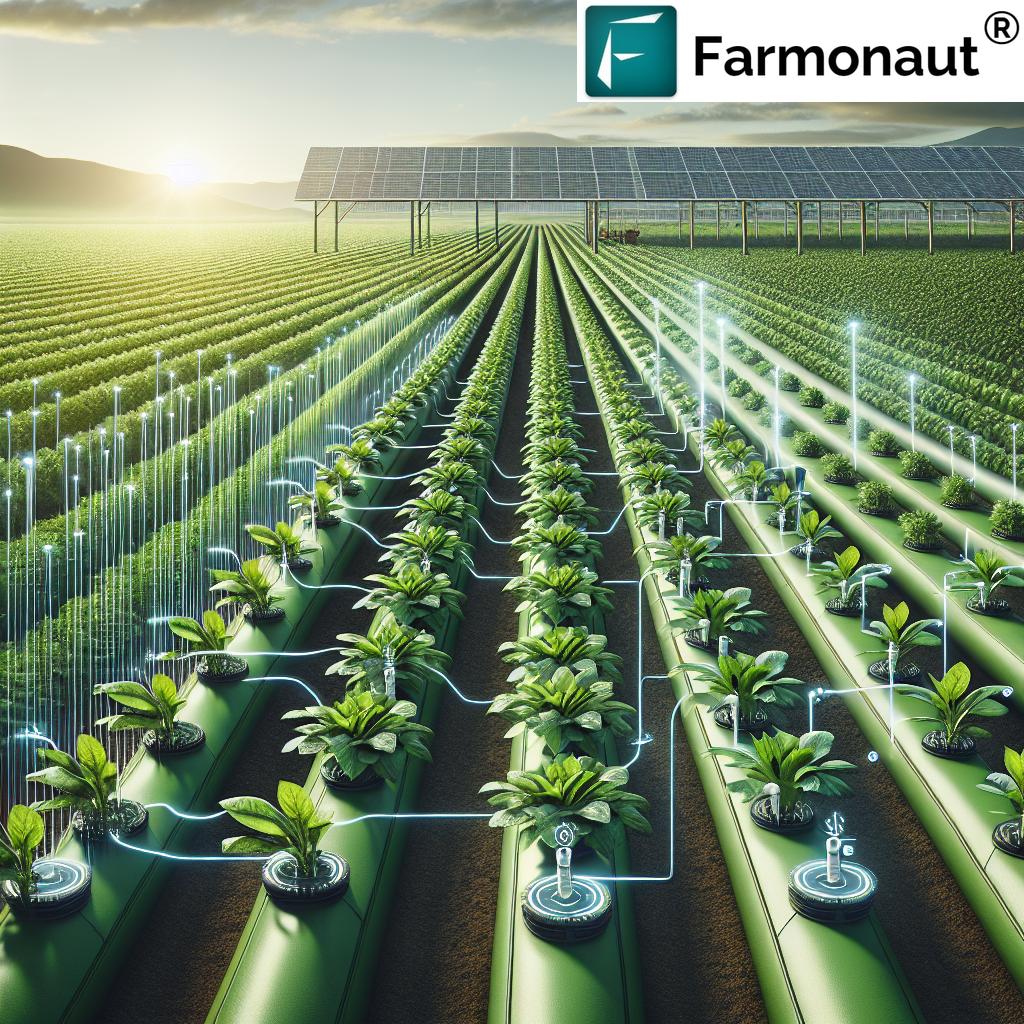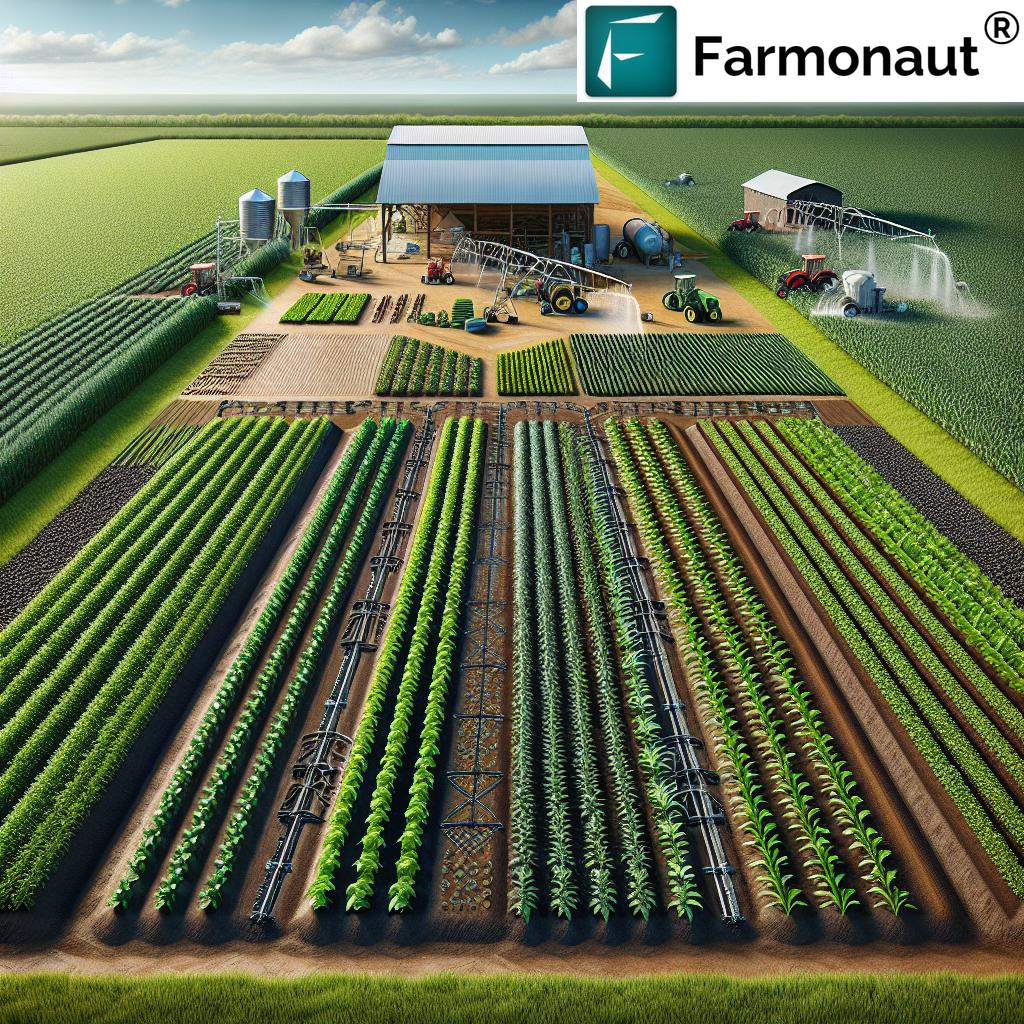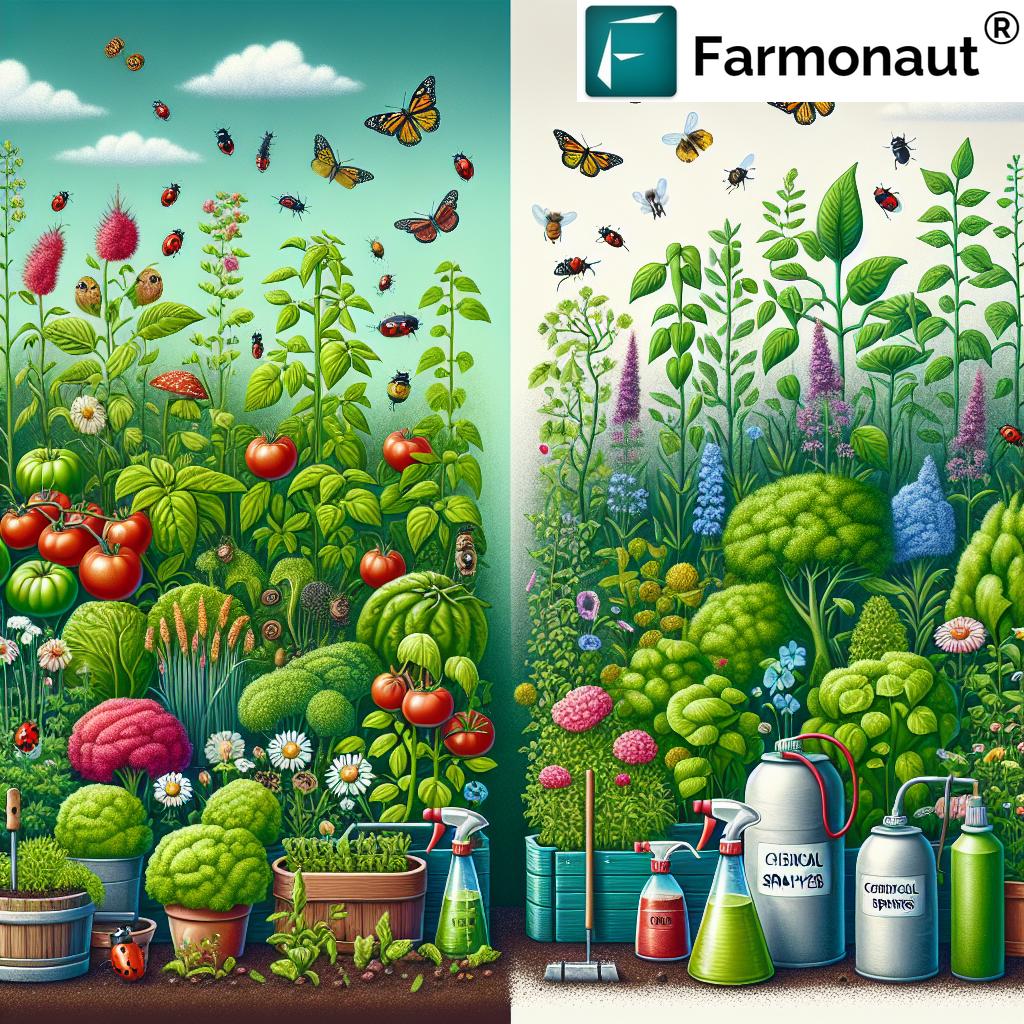Table of Contents
- Introduction
- What is Precision Agriculture?
- How Does Precision Agriculture Work?
- How Does Precision Agriculture Improve Crop Yields?
- Estimated Impact of Precision Agriculture Technologies on Crop Yields in 2025
- How to Improve Agriculture Through Precision Farming
- Farmonaut: Accessible, Affordable Precision Agriculture Solutions in 2025
- Challenges and Future Outlook (2025 and Beyond)
- Frequently Asked Questions (FAQs)
- Conclusion
“Precision agriculture can increase crop yields by up to 20% in 2025 using data-driven decision-making tools.”
How Does Precision Agriculture Improve Crop Yields?
In 2025, the question how does precision agriculture improve crop yields sits at the heart of the agricultural revolution. Facing unprecedented challenges like a growing global population, climate change, and the limits of our finite natural resources, the farming sector needs smarter, more efficient solutions. That’s where precision agriculture emerges as a transformative approach, enabling us to enhance productivity and secure food supplies while ensuring sustainability.
This article explores how precision agriculture works, the practical ways it’s revolutionizing crop management in 2025, and exactly how these advanced technologies are boosting yields, optimizing inputs, and shaping the future of agriculture.
What is Precision Agriculture?
Precision agriculture (PA), sometimes called precision farming or smart farming, involves the integration of advanced technologies and data-driven management to monitor, analyze, and optimize agricultural activities at the micro level. This means that instead of applying treatments and inputs uniformly across the entire field, precision agriculture gives us the ability to treat each section—or even each plant—according to its specific needs.
- Tailored Input Application: By applying seeds, fertilizers, water, and pesticides only where necessary, we reduce waste and enhance resource efficiency.
- Technology Integration: Sensors, drones, satellite imagery, and advanced data analytics underpin the entire system, giving farmers precise, actionable information.
- Data-Driven Decision Making: Using real-time data on soil moisture, plant health, and weather conditions, farmers can make informed decisions, improving both the quantity and quality of crop yields.
How Does Precision Agriculture Work?
Understanding how precision agriculture works is key to seeing how it revolutionizes yields agriculture. The backbone of PA is a multi-layered integration of technologies, enabling farmers to monitor, analyze, and manage every aspect of their fields—from soil to harvest.
-
Remote Sensing & Satellite Imagery:
- Satellites and drones capture high-resolution images, providing real-time data on crop health, soil conditions, moisture levels, and pest infestations.
- Farmonaut delivers satellite-based monitoring to help farmers quickly identify underperforming zones and potential issues, optimizing input application (NDVI, soil moisture, and more).
-
GPS & GIS Integration:
- GPS allows precise mapping of farm plots and navigation for machinery during planting, fertilizing, and harvesting.
- GIS combines location-based data layers (soil, weather, yield, management history) to facilitate better input application and recordkeeping.
-
Soil and Crop Sensors:
- In-field sensors measure soil temperature, nutrient levels, pH, moisture, and plant health.
- This data feeds directly into farm management platforms like Farmonaut, informing variable-rate input application and status alerts.
-
AI, Data Analytics & Advisory Systems:
- Artificial Intelligence (AI) and machine learning analyze huge volumes of agricultural data to predict plant growth, pest/disease outbreaks, and yield forecasts.
- Farmonaut’s Jeevn AI Advisory System gives real-time, personalized recommendations to optimize crop and input management based on the latest satellite data and conditions.
-
Automated Machinery & Drones:
- Autonomous tractors, drones, and irrigation systems perform precision tasks with minimized labor and maximum efficiency.
- Drones are used for both monitoring (scouting large areas) and for applying agrochemicals directly to targeted zones.
-
These technologies work together as a precision ecosystem, greatly enhancing yields agriculture by ensuring every plant receives adequate, targeted care. The result: Resource savings, efficient management, and higher crop productivity.
“Over 70% of farms are expected to adopt smart sensors for precision agriculture by 2025, revolutionizing crop management.”
How Does Precision Agriculture Improve Crop Yields?
How does precision agriculture improve crop yields? Let’s break down the mechanisms through which PA boosts yield quantity, quality, and agricultural sustainability:
1. Optimized Input Application
- Site-Specific Management: Inputs (fertilizers, water, pesticides) are applied only where and when needed, preventing resource waste and pollution.
- Variable Rate Technology (VRT): Allows fertilizing, seeding, and spraying at variable rates across the field based on real data, enhancing both soil and crop productivity.
2. Early Detection of Stress and Diseases
- Remote sensing and sensor data detect plant stress, pest infestations, and nutrient deficiencies at the earliest stage.
- This enables timely interventions, significantly reducing yield losses.
-
3. Improved Soil Health Management
- Continuous soil monitoring helps maintain fertility, optimize pH, and balance nutrient levels.
- Techniques like variable-rate lime application correct pH disparities, promoting uniform crop growth and yield potential.
4. Reduced Environmental Impact
- Precision application of fertilizers and pesticides reduces runoff and greenhouse gas emissions from over-application.
-
More resilient farm ecosystems contribute to long-term agricultural sustainability.
Learn more about measuring and reducing your farm’s carbon footprint with Farmonaut’s dedicated solution.
5. Adaptive Management Amidst Climate Change
- Real-time weather and soil moisture data allows for smarter irrigation, planting, and input timing.
- As erratic weather becomes the norm, such adaptive management becomes essential for consistent yields agriculture.
6. Data-Driven Decision-Making Platforms
-
Decision Support Systems (DSS) integrate analytics, AI, and field data to offer actionable recommendations for every stage—from planting to harvest.
Discover scalable large-scale farm management tools and advisory systems optimized for your operation.
It’s clear: How does precision agriculture impact crop yields? By combining targeted input use, early intervention, real-time monitoring, and robust farm management, yields can increase by an average of 10–30% compared to conventional methods, based on crop type and location.
Estimated Impact of Precision Agriculture Technologies on Crop Yields in 2025
| Technology | Description | Estimated Yield Increase (%) | Additional Benefits |
|---|---|---|---|
| Satellite Imagery & Remote Sensing | Provides large-scale, real-time crop and soil health insights via satellites and drones. | 10 – 25% | Early stress/pest detection, easier input targeting, large-area scalability. |
| AI-Based Forecasting & Decision Support (DSS) | Uses data analytics and AI models for yield prediction, resource planning, and input recommendations. | 12 – 30% | Proactive risk mitigation, efficient farm management, reduced losses. |
| Soil & Crop Sensors | Constantly monitor soil moisture, nutrients, pH, and crop health at the micro level. | 8 – 21% | Improved irrigation and fertilization, better soil management, water savings. |
| Drones (for Monitoring & Input Application) | Drones scout large areas, spray pesticides/fertilizers only where needed. | 13 – 23% | Labor cost reduction, less chemical use, speed, improved safety. |
| Variable Rate Technology (VRT) | Automatically adjusts input rates across zones via tractors, planters, or drones. | 10 – 18% | Input savings (10–20%), minimized runoff, uniform crop development. |
Note: Percentages reflect typical average improvements, but actual impacts depend on local conditions and adoption level.
How to Improve Agriculture Through Precision Farming
The journey to improved agricultural productivity using precision farming techniques involves a series of actionable practices that farmers in 2025 can implement:
- Invest in Technology and Training
- Upfront technology costs and technical skills are common PA challenges. Access to digital literacy and continuous training are vital for full benefits.
- We at Farmonaut simplify adoption via intuitive mobile/web apps, translating high-tech insights into practical crop-level recommendations accessible to every farmer.
- Implement Variable Rate Technologies (VRT)
- VRT-enabled machinery (planters, sprayers, irrigators) distributes inputs precisely across field zones based on data-driven maps.
- Creating and utilizing such precise field data is made seamless with our large-scale farm management platform.
- Leverage Decision Support Systems (DSS)
- These systems unite analytics, local agronomic knowledge, weather predictions, and satellite data to recommend optimal actions for yield and sustainability.
- Integrated via fleet and resource management solutions.
- Emphasize Robust Data Collection
- Maintain regular, high-quality data collection on soil, crop, field activities, and machinery.
- Cloud-based management, like with Farmonaut, offers scalable and secure farm records across areas, crops, and seasons.
- Promote Sustainable Crop Rotation and Cover Crops
- Rotating crops and using cover crops improves soil health, reduces pest pressure, and elevates overall yields.
- Farmonaut can help track varied rotations and their impacts through plantation and forest advisory modules.
- Enhance Water Management
- Precision irrigation systems—like drips and smart watering triggered by soil moisture sensors—reduce water use while maintaining maximum crop health.
- Utilize Drones for Monitoring and Application
- Drones quickly survey fields for issues or apply agrochemicals in targeted applications, reducing labor and costs.
For farmers and agribusinesses considering wider adoption of PA, Farmonaut provides API access and developer documentation for deep IoT, weather, and remote sensing data integration—enabling custom solutions and applications.
Farmonaut: Accessible, Affordable Precision Agriculture Solutions in 2025
At Farmonaut, our mission is to democratize precision agriculture globally—making smart, data-driven crop management accessible for farmers and agribusinesses of all scales by leveraging intuitive platforms and cutting-edge technologies.
Farmonaut’s Key Offerings in Precision Farming
- Satellite-Based Crop Monitoring: Get real-time views of crop health (NDVI), soil moisture, growth stages, and disease risk via easy-to-use web and mobile apps—no expensive hardware required.
- Jeevn AI Advisory System: Receive dynamic, personalized recommendations based on AI-driven analyses of satellite and field data—covering weather, irrigation, input application, and pest/disease threats.
-
Blockchain-Based Product Traceability: Ensure full transparency and trust across agricultural supply chains with verifiable product origin, critical for food safety and market access.
Learn how traceability adds value and opens new markets.
-
Fleet & Resource Management: Track field activities, optimize farm machinery usage, reduce operational costs, and minimize downtime across all farm areas.
Scale up your resource management with real-time insights. -
Carbon Footprint Tracking: Gain actionable reports on your operation’s environmental impact and comply with regulatory or market demands for sustainability.
Start monitoring your carbon emissions today!
- Crop Loan & Insurance: Enhance access to finance and reduce fraud via satellite-based crop verification tools trusted by financial institutions.
We offer subscription packages, scalable across single farms to entire governmental programs, with affordable pricing and seamless cloud access.
Challenges and Future Outlook (2025 and Beyond)
While the benefits of precision agriculture are profound, several challenges remain for full-scale adoption, especially across global farming sectors by 2025:
- Initial Costs & Accessibility: Technology investments and infrastructure may be out of reach for some smallholders.
- Interoperability: Ensuring different devices, software, and data formats work seamlessly together requires ongoing standardization.
- Digital Divide: Reliable internet and technical support are not uniformly available in all rural areas.
- Data Privacy & Security: As farms generate and depend on sensitive digital data, robust privacy, traceability, and transparency become even more important.
- Our blockchain-based traceability platform is designed to ensure data security and supply chain trust.
The Future: What’s Next for Smart Farming?
- Cost reduction and mainstream adoption through open-source software, affordable sensor kits, and cloud-based platforms.
- Miniaturization of sensors and deeper IoT (Internet of Things) integration for precise, granular monitoring.
- Advanced biotechnology dovetailing with digital tools for even more precise inputs—while blockchain further ensures transparency.
- Farms leveraging carbon tracking for new sustainability certifications and premium markets.
- Integrated insurance and financial products, built on real, verified field data, improving farmer access to credit and risk management.
The outlook is clear: Precision agriculture is no longer just a “nice to have.” For farmers in 2025 and beyond, it will be the essential foundation of food security, sustainability, and business resilience.
Frequently Asked Questions (FAQs)
What is the main goal of precision agriculture?
The main objective is to optimize input application, enhance crop yields, and ensure sustainable resource use by using advanced technology and data-driven methods rather than uniform management practices.
How does precision agriculture work in real time on farms?
Real-time data from sensors, satellites, and weather monitoring is analyzed (often by AI-based systems) to recommend precise actions like variable rate fertilizing, pest detection, and targeted irrigation, all managed easily through smartphones or computers.
What kind of yield improvements can I expect?
Yield improvements depend on crop, region, and how comprehensively PA is applied. On average, farmers can expect 10–30% higher crop yields with precision agriculture, plus resource and cost savings.
Is precision farming only for large commercial farms?
No! While early adopters were mostly large farms, affordable, app-based platforms like Farmonaut are democratizing access for smallholder farms—enabling them to benefit from timely data, AI advice, and cost-effective resource management.
Can I use precision agriculture for all crops?
Precision techniques are adaptable to all crops—grains, pulses, vegetables, fruit, and specialty crops—by customizing data collection and input strategies to each crop’s requirements.
How does Farmonaut make precision agriculture affordable?
We offer subscription-based, pay-as-you-grow access to satellite-derived, AI-powered farm management. Our solutions require no expensive hardware and support integration with standard farm processes—making advanced agtech available even on tight budgets.
Conclusion
Precision agriculture is revolutionizing crop yields and sustainable farming for 2025 and beyond. By utilizing data, sensors, and smart technologies, it empowers farmers to optimize input use, manage risks from climate change, and consistently deliver more food with fewer resources, all while reducing environmental impact.
As the global sector faces new challenges, precision agriculture offers innovative, scalable solutions for yield improvement, cost reduction, and sustainability. Whether for smallholders or large enterprises, PA is now the backbone of sustainable, data-driven yields agriculture.
Our team at Farmonaut is committed to making precision farming easier, smarter, and more accessible—so every farmer worldwide can maximize productivity and sustainability.











